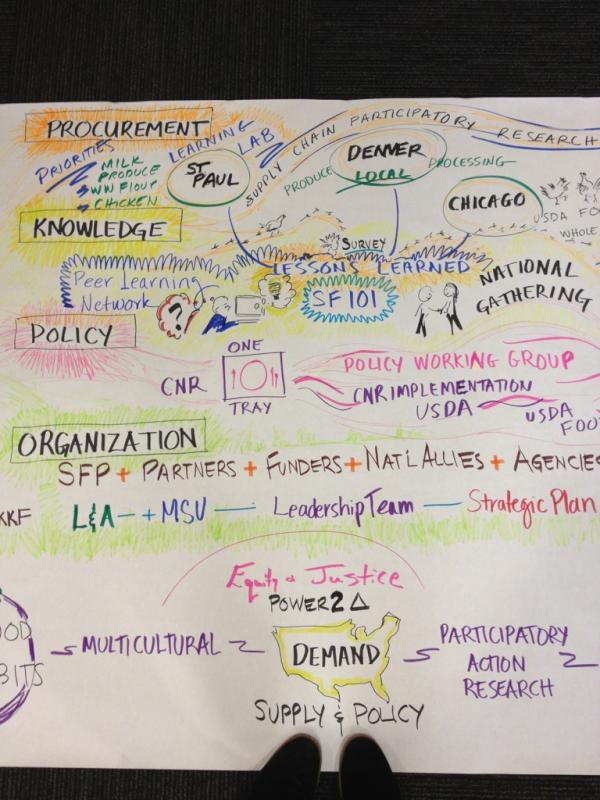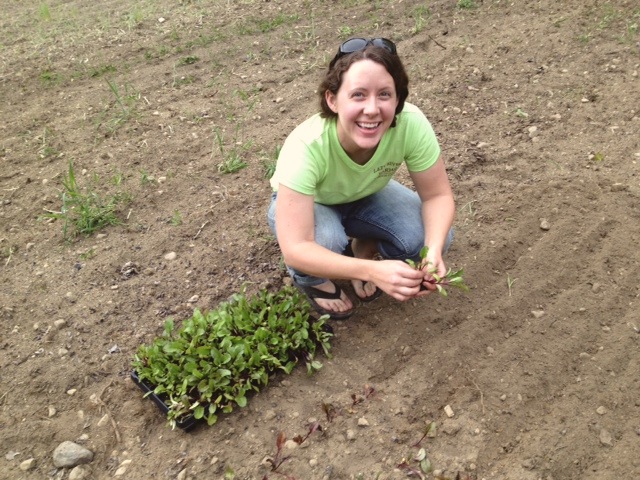In recent years, our food system has shown dramatic growth in direct markets, where consumers buy food directly from those who produced it. Farmers markets, Community Supported Agriculture programs and farm stands are the most common examples. They are vital avenues for good food – food produced which is healthful and produced with respect for the environment, farmworkers and farm animals – to reach consumers, and for consumers to express their values in the marketplace. Direct markets have also proven to be important ways to create, build and maintain relationships between farmers and eaters, to mutual benefit.
But there is a limited quantity of food people are willing and able to buy directly from farmers. We all enjoy the ease and convenience of one-stop shopping at grocery stores, or eating in restaurants and cafeterias. The supply chains for these markets favor commodities: homogenous and anonymous foods which can be easily traded, and where price is the only important factor driving purchases.
A question on which I spend a great deal of my professional life is this: how can good food be made available in these indirect (grocery and restaurant) markets with the information about how, where and by whom it was produced – and the values embedded in this information – available to consumers instead of lost in the supply chain?
A promising model that many colleagues and I have investigated is the values-based supply chain or value chain. Value chains are strategic partnerships of supply chain actors which operate to deliver high value food to consumers in ways which benefit all supply chain actors.
Key attributes of value chains include:
Relationships of mutual regard based on shared values. Value chain actors share values and use their business to collaboratively achieve goals related to these values, such as support for local farms and high quality, nutritious food.
Fair, stable pricing. Pricing is supported by differentiation strategies that create value for customers by offering unique product attributes
Co-learning, trust and communication. Partners invest in the relationships with partners and share information which solves problems.
One factor which I am learning is especially important is to form partnerships that fit well. The partners are of compatible scale such that each is a valued customer or supplier of the other: they treat each other with respect and will work together to smooth the rough spots. They are able to find a sweet spot: the confluence of supply and demand, of bid and ask, of need and have, or give and take.
A great example of this is Denver Public Schools (DPS) and Ready Foods, a custom food processor in Denver. My research in the School Food FOCUS project helped these two parties find each other, and they have found increasing ways to work together. DPS is a large account, and Ready Foods is willing and able to customize recipes, source ingredients and prepare foods efficiently and to allow DPS to serve healthy, affordable, tasty and locally-sourced foods to students. It is a true success story, one of many which I hope will continue to path of good food to many mouths.
What value chain partnerships are you inspired by?

















